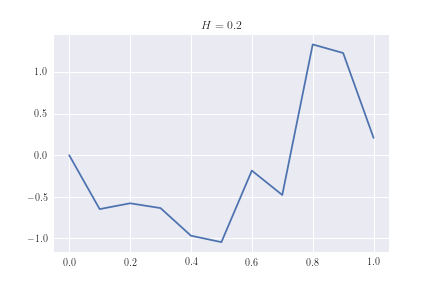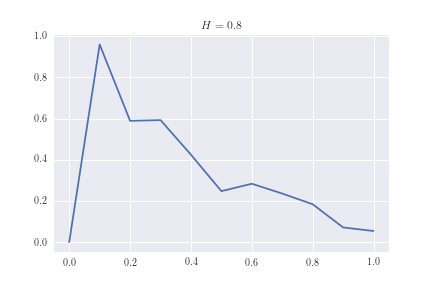Malliavin calculus¶
My list of publications which are related to Malliavin calculus per se
The latest publications¶
Read more about the Malliavin structure for independent random variables.
Read more about fractional Brownian motion.
Malliavin calculus for independent random variables¶
Abstract: On any denumerable product of probability spaces, we construct a Malliavin gradient and then a divergence and a number operator. This yields a Dirichlet structure which can be shown to approach the usual structures for Poisson and Brownian processes. We obtain versions of almost all the classical functional inequalities in discrete settings which show that the Efron-Stein inequality can be interpreted as a Poincaré inequality or that Hoeffding decomposition of U-statistics can be interpreted as a chaos decomposition. We obtain a version of the Lyapounov central limit theorem for independent random variables without resorting to ad-hoc couplings, thus increasing the scope of the Stein method.
@Article{Decreusefond2019,
author = {Decreusefond, L. and Halconruy, H.},
date = {2019},
journaltitle = {Stochastic Processes and their Applications},
title = {Malliavin and {D}irichlet structures for independent random variables},
doi = {10.1016/j.spa.2018.07.019},
issn = {0304-4149},
number = {8},
pages = {2611--2653},
volume = {129},
file = {:decreusefond/Decreusefond_2018 - Malliavin and Dirichlet Structures for Independent Random Variables.pdf:PDF},
mrnumber = {3980139}}
Fractional Brownian motion¶
In the nineties, statistical evidence, notably in finance and telecommunications, showed that Markov processes were to far away from the observations to be considered as viable models. In particular, there were strong suspicions that the data exhibit long range dependence. It is in this context that the fractional Brownian motion, introduced by B. Mandelbrot in the late sixties and almost forgotten since, enjoyed a new rise of interest. It is a Gaussian process with long range dependence. Consequently, it cannot be a semi-martingale and we cannot apply the theory of Itô calculus. As we have seen earlier, for the Brownian motion, the Malliavin divergence generalizes the Itô integral and can be constructed for the fBm, so it is tempting to view it as an ersatz of a stochastic integral. Actually, the situation is not simple and depends on what we call a stochastic integral.


Note
Two interesting documents